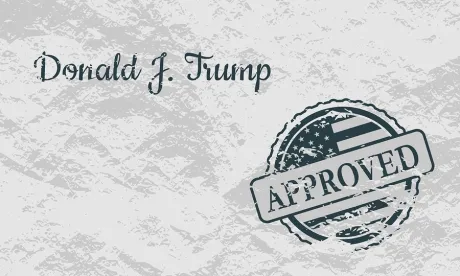On April 10th, President Donald Trump signed two Executive Orders that seek to promote timely review of critical energy infrastructure projects in the United States. These changes to the review process seek to “enable the timely construction of the infrastructure needed to move our energy resources through domestic and international commerce.” (EO 13868.) “By promoting the development of new energy infrastructure, the United States will make energy more affordable, while safeguarding the environment and advancing our Nation’s economic and geopolitical advantages.” (EO 13868.)
EO 13867: Issuance of Permits with Respect to Facilities and Land Transportation Crossings at the International Boundaries of the United States
The first Executive Order provides that the President shall have sole authority to issue permits for pipelines that cross international borders. This order revokes previous executive orders that vested such permitting authority in the State Department. Under the new order, the Secretary of State will continue to review all Presidential permit applications; however, the Secretary must complete its review and provide its opinion to the President within 60 days of receiving an application for a cross-border pipeline.
This order comes less than two weeks after President Trump issued a new cross-border permit for the Keystone XL pipeline thereby revoking the State Department’s cross-border permit, which had created significant litigation in US District Court for the District of Montana as well as an appeal to the Ninth Circuit.
EO 13868: Promoting Energy Infrastructure and Economic Growth
President Trump begins the second Executive Order by noting that the United States is the world’s leading producer of natural gas and became a net exporter in 2017 for the first time since 1957.
The order then requires the Administrator of the US Environmental Protection Agency to consult with States, tribes, and relevant executive departments and agencies in reviewing section 401 of the Clean Water Act and US EPA’s related regulations and guidance to determine whether any provisions thereof should be clarified in order to promote private investment in the Nation’s energy infrastructure. The Executive Order provides several methods through which such promotion may occur, including an efficient permitting process, timely action on infrastructure projects, and increased regulatory certainty regarding the development of new energy infrastructure.
Simultaneous with President’s signature on EO 13868, Senator John Barrasso (Wyoming) introduced S. 1087, the Water Quality Certification Improvement Act of 2019 (the “Act”). Representative David McKinley (West Virginia) then introduced H.R. 2205, an identical companion bill. The press release from the US Senate Committee on Environment and Public Works notes that the Act would do the following:
- Clarify that the scope of a section 401 review is limited to water quality impacts only;
- Clarify that states, when evaluating water quality, can only consider discharges that would result from the federally permitted or licensed activity itself – not from other sources;
- Require states to publish clear requirements for water quality certification requests;
- Require states to make final decisions on whether to grant or deny a request in writing based only on water quality reasons; and
- Require states to inform a project applicant within 90 days whether the states have all of the materials needed to process a certification request.



 />i
/>i
